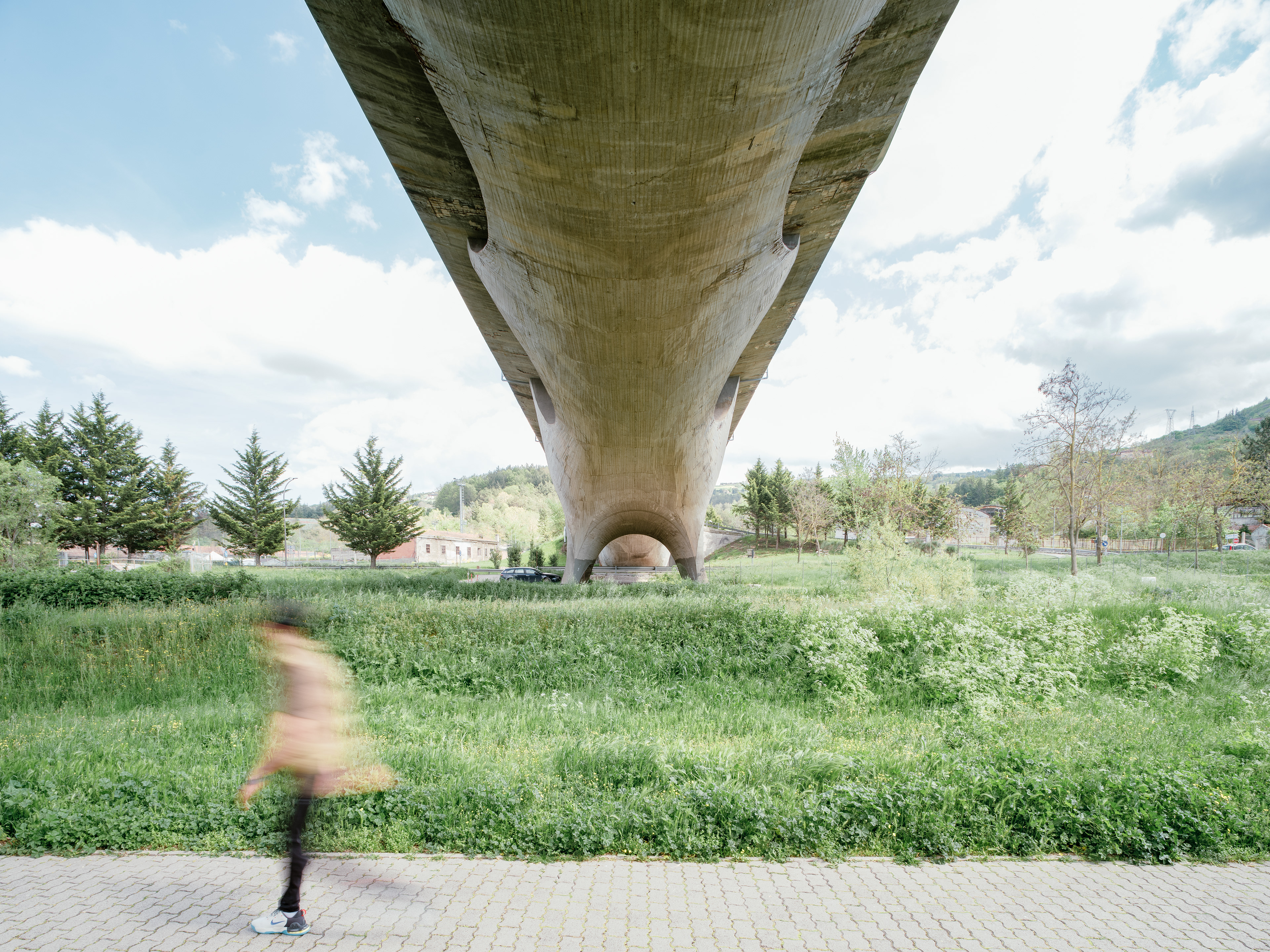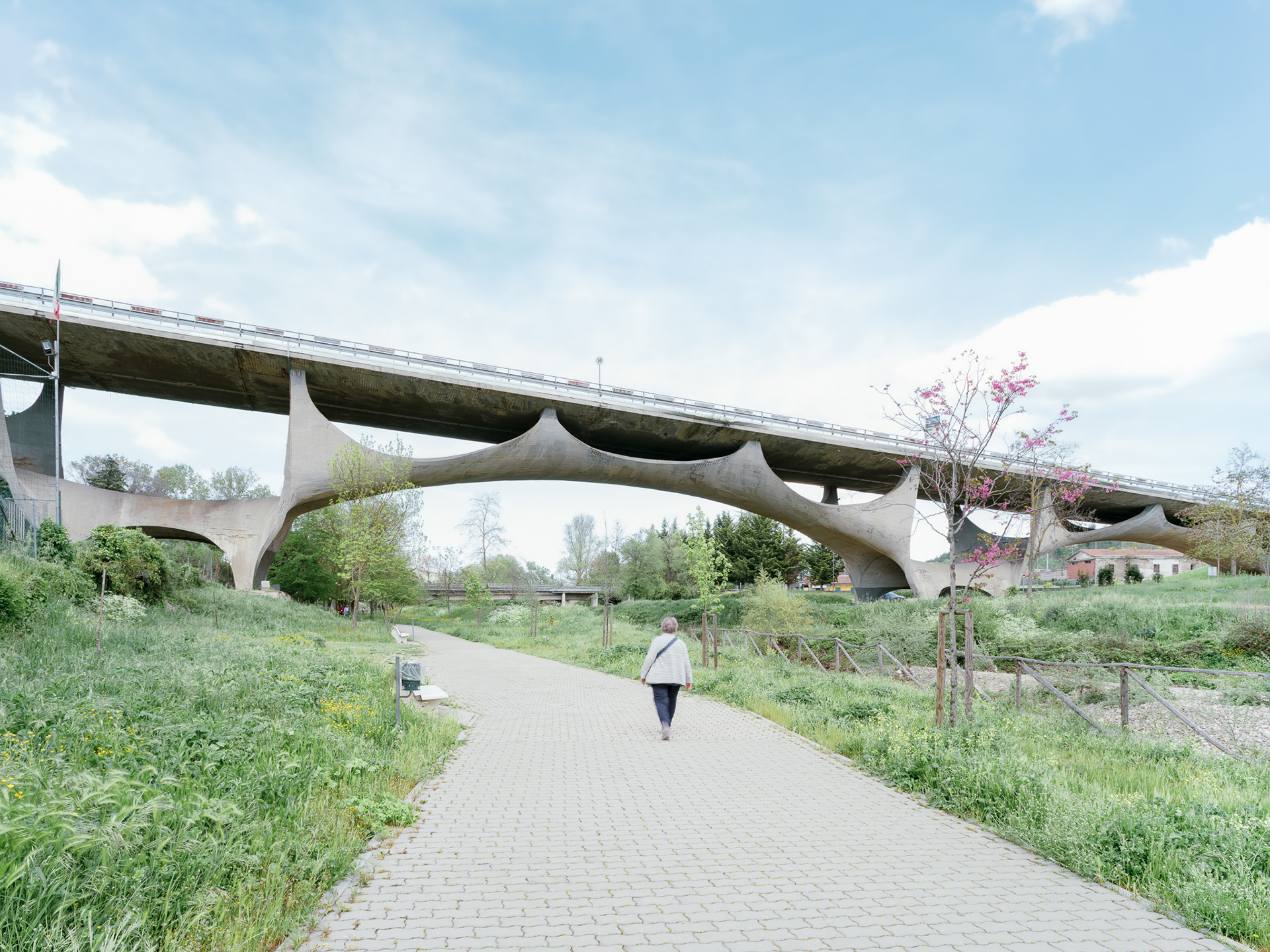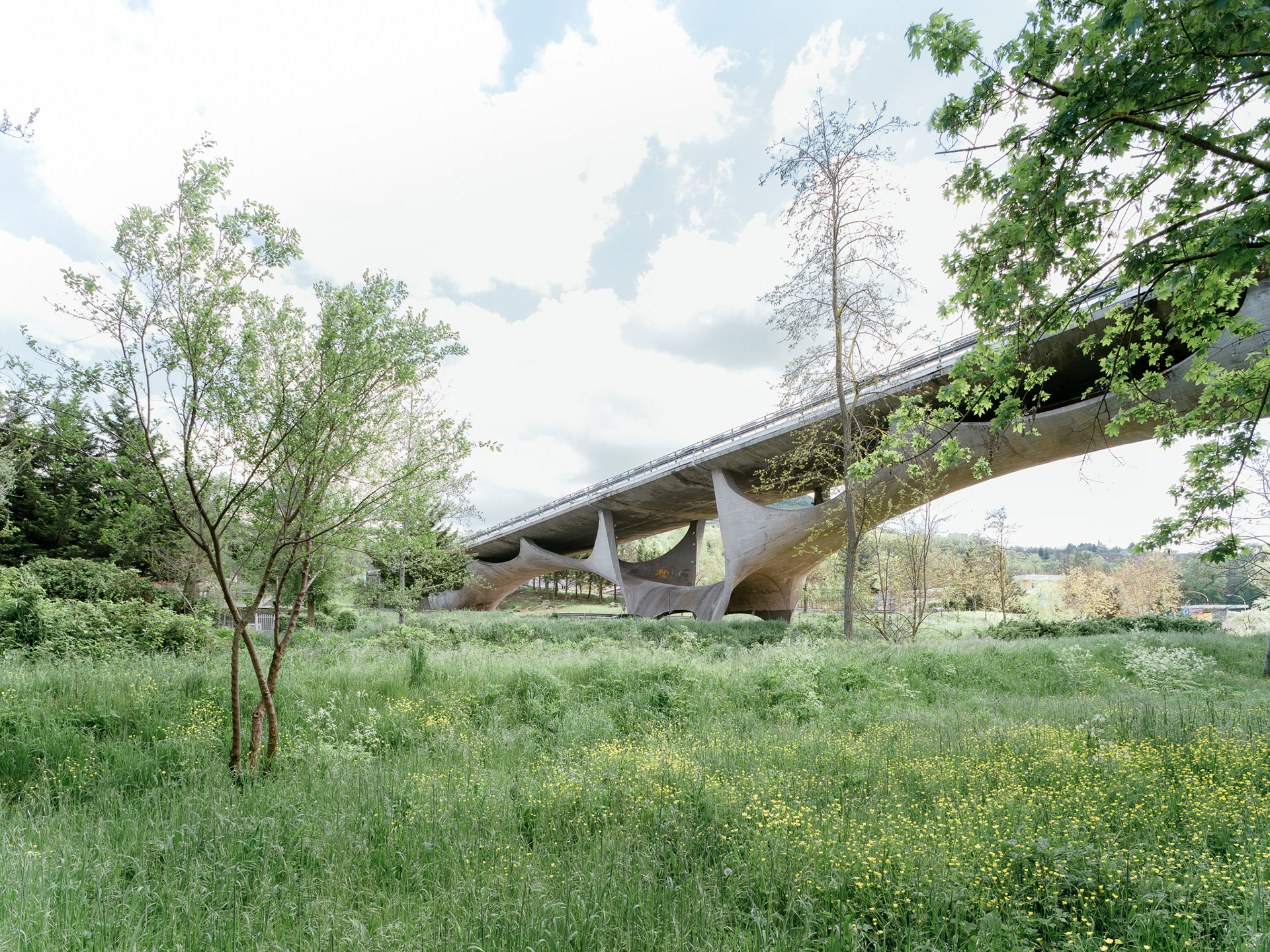Ponte Musmeci, l’equilibrio al margine dell’urbanizzato (2023)
ITA
Il Ponte Musmeci di Potenza, un'opera d'arte architettonica che abbraccia sia la funzionalità che l'estetica, si innalza come un simbolo dell'ingegno umano e della sua capacità di unire elementi contrastanti. Il ponte stesso incarna un equilibrio sottile tra cemento e natura, unendo la robustezza dell'architettura moderna con la bellezza senza tempo del paesaggio circostante. Situato nella pittoresca città di Potenza, il Ponte si integra armoniosamente nel suo contesto urbano. L'opera si estende audacemente sopra il fiume Basento, collegando le due rive e fungendo da connessione vitale tra le diverse parti della città. Ma questo va oltre la sua funzione pratica. Attraversarlo è un'esperienza che nutre lo spirito e sollecita la contemplazione. Il Ponte Musmeci diventa un riferimento importante per il concetto di terzo paesaggio, enunciato dal famoso paesaggista Gilles Clément. Questa filosofia invita a considerare il paesaggio come un tessuto complesso in cui l'interazione tra la natura e l'uomo è cruciale. In questo contesto, il ponte rappresenta un elemento di transizione tra gli spazi urbani artificiali e il paesaggio naturale che lo circonda. L'architettura del Ponte Musmeci cattura l'immaginazione con le sue linee curve e sinuose, che si sposano elegantemente con l'ambiente circostante. La struttura in cemento armato si alza maestosamente nel cielo, mentre le arcate si riflettono dolcemente nell'acqua del fiume, creando un'armonia visiva tra il manufatto e l'elemento liquido che lo avvolge. Questa fusione di elementi contrastanti, cemento e acqua, rappresenta la dualità dell'essere umano, la capacità di creare e la necessità di adattarsi all'ambiente naturale. La presenza del Ponte nel contesto urbano di Potenza offre un punto di riferimento tangibile per i suoi abitanti. Diventa una presenza costante, parte integrante della quotidianità, quasi un compagno silenzioso che accompagna le loro vite. I residenti possono percorrere il ponte con passo sicuro e contemplare la bellezza della natura circostante, trovando un momento di pace e riflessione nel trambusto della vita moderna. Inoltre, il Ponte Musmeci può essere interpretato come un'opera che promuove un legame più profondo tra l'uomo e la natura. Le sue arcate si ergono come bracci aperti che abbracciano il paesaggio, invitando gli osservatori a riflettere sulla loro relazione con l'ambiente naturale. Nel contesto della filosofia del terzo paesaggio, il ponte assume un ruolo importante nel riaffermare la connessione tra l'essere umano e la natura, suggerendo che l'equilibrio tra cemento e natura è essenziale per un ambiente sostenibile e armonioso. In definitiva, il Ponte Musmeci di Potenza è un'opera che va oltre la sua funzione pratica di collegamento fisico tra due rive. Rappresenta una riflessione sulla bellezza, sull'equilibrio e sulla connessione tra l'uomo e la natura. Nella sua presenza quotidiana nella vita degli abitanti di Potenza, offre una testimonianza tangibile del potere dell'architettura per trasformare e arricchire il contesto urbano. Il ponte invita ad apprezzare la delicatezza dell'equilibrio tra cemento e natura, aprendo un dialogo costante sulla nostra relazione con l'ambiente che ci circonda.
EN
The Musmeci Bridge in Potenza, an architectural masterpiece that embraces both functionality and aesthetics, rises as a symbol of human ingenuity and its ability to unite contrasting elements. The bridge itself embodies a delicate balance between concrete and nature, merging the robustness of modern architecture with the timeless beauty of the surrounding landscape. Located in the picturesque city of Potenza, the Bridge harmoniously integrates into its urban context. Boldly spanning over the Basento River, it connects the two banks, serving as a vital link between different parts of the city. But it goes beyond its practical function. Crossing it is an experience that nourishes the spirit and prompts contemplation. The Musmeci Bridge becomes a significant reference for the concept of the "third landscape," as articulated by the renowned landscape architect Gilles Clément. This philosophy invites us to consider the landscape as a complex fabric where the interaction between nature and humans is crucial. In this context, the bridge represents a transitional element between artificial urban spaces and the natural landscape that surrounds it.The architecture of the Musmeci Bridge captures the imagination with its curved and sinuous lines, elegantly blending with the surrounding environment. The reinforced concrete structure majestically rises into the sky, while its arches gently reflect in the river water, creating a visual harmony between the artifact and the liquid element that envelops it. This fusion of contrasting elements, concrete and water, represents the duality of human existence, the capacity to create, and the need to adapt to the natural environment.The presence of the Bridge in Potenza's urban context provides a tangible reference point for its inhabitants. It becomes a constant presence, an integral part of everyday life, almost a silent companion accompanying their lives. Residents can traverse the bridge with confidence and contemplate the beauty of the surrounding nature, finding a moment of peace and reflection amidst the bustle of modern life. Furthermore, the Musmeci Bridge can be interpreted as a work that promotes a deeper bond between humans and nature. Its arches stand as open arms embracing the landscape, inviting observers to reflect on their relationship with the natural environment. In the context of the third landscape philosophy, the bridge plays an important role in reaffirming the connection between humans and nature, suggesting that the balance between concrete and nature is essential for a sustainable and harmonious environment. Ultimately, the Musmeci Bridge in Potenza is a work that transcends its practical function of physically linking two riverbanks. It represents a reflection on beauty, balance, and the connection between humans and nature. In its daily presence in the lives of Potenza's inhabitants, it offers a tangible testimony to the power of architecture to transform and enrich the urban context. The bridge invites appreciation for the delicacy of the balance between concrete and nature, opening a constant dialogue about our relationship with the environment that surrounds us.


